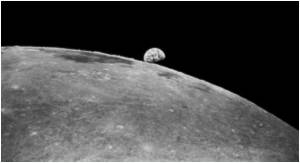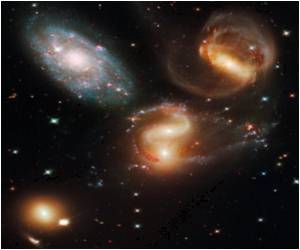
"If we send human beings back to the Moon, and especially if we're able to go to Mars, it will be critical to have a system like this in place to protect astronauts from radiation hazards," said associate professor of physics Nathan Schwadron of the UNH Institute for the Study of Earth, Oceans, and Space (EOS), which houses the SSC.
Schwadron is the lead developer of the new web-based tool known as PREDICCS, which for the first time integrates numerical models of space radiation, a host of real-time measurements being made by satellites currently in space, and "propagation codes" that can accurately project radiation levels out as far as Mars.
The tool was made possible through NASA's Living With A Star (LWS) Targeted Research and Technology program.
The website provides updates of the radiation environment on an hourly basis and archives the data weekly, monthly, and yearly. This historical record provides a clear picture of when a safe radiation dose limit is reached for skin or blood-forming organs, for example.
Among other satellite measurements used by PREDICCS are solar energetic particle data from the Cosmic Ray Telescope for the Effects of Radiation (CRaTER) instrument on NASA's Lunar Reconnaissance Orbiter.
Advertisement
During several recent large solar events in which the Sun, waking from an unusually long quiet period, sent billions of tons of high-energy particles rippling through space, the radiation levels measured by CRaTER as it orbited the Moon were matched almost perfectly by PREDICCS.
Advertisement
CRaTER, which gauges radiation doses using a high-tech material called "tissue-equivalent plastic" that mimics human muscle, has thus not only provided the validation that PREDICCS models are accurate, but has done so in the context of how the radiation data would impact human beings on the Moon or on a mission to Mars.
"We needed to accurately assess what the biological impacts are to make the best quantitative comparisons between models and observations," said Schwadron, "and having a system like this in place now is sort of like flying a trial balloon in preparation for a return to the Moon and a trip to Mars."
A blog has also been developed for PREDICCS that allows people to understand how the tool works and how to interpret the various graphs of radiation dosage. (ANI)
Source-ANI














